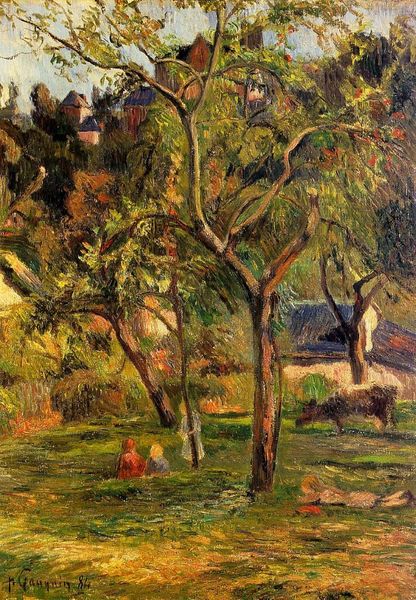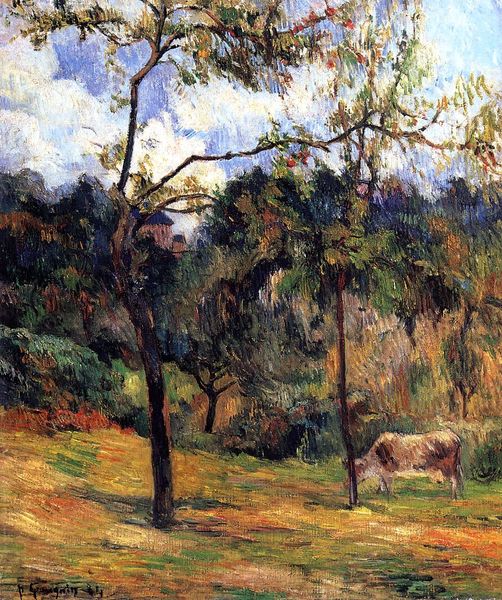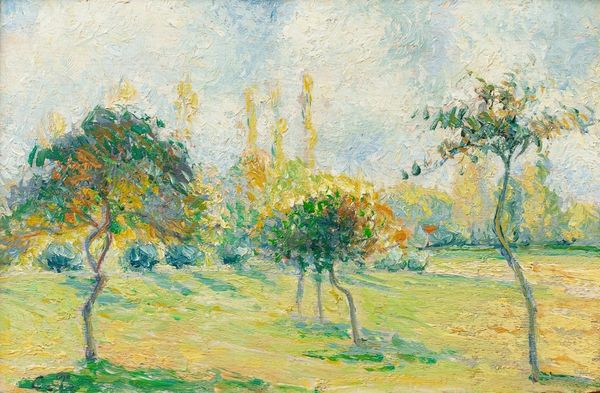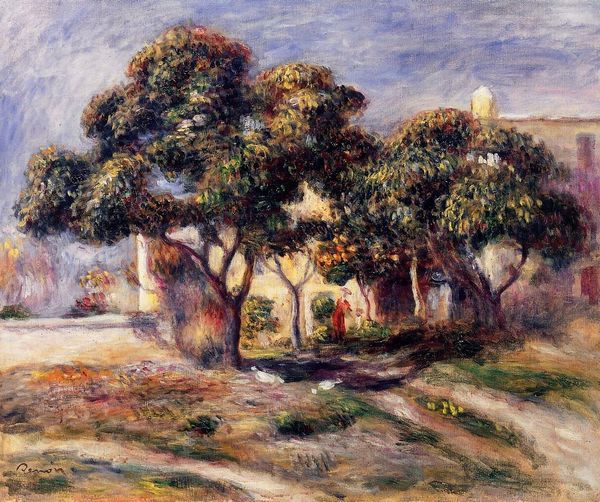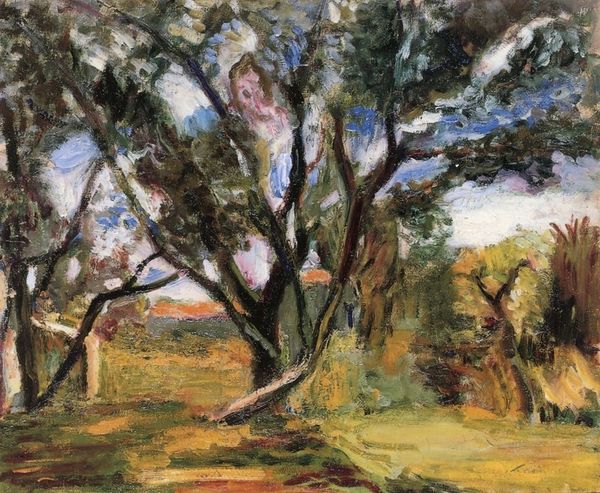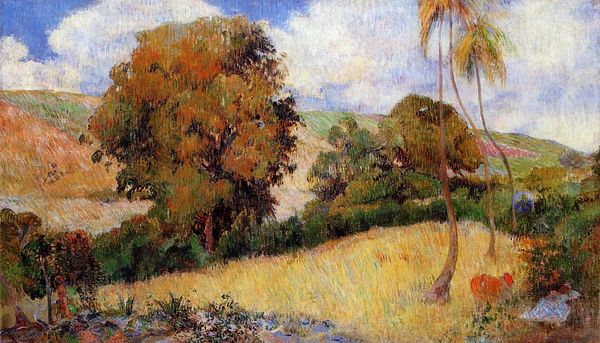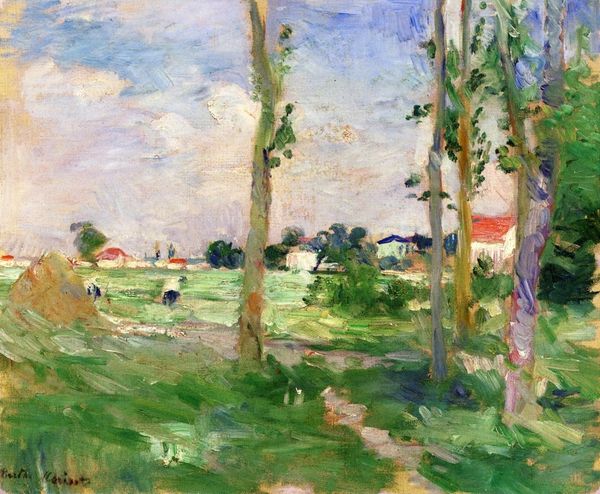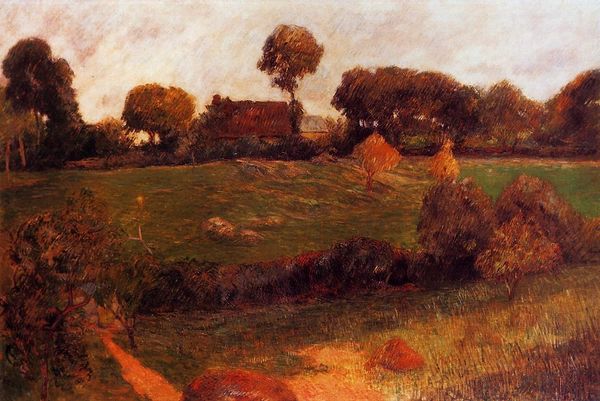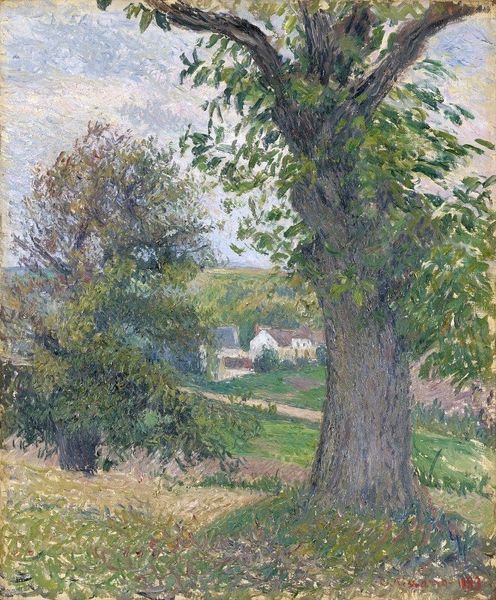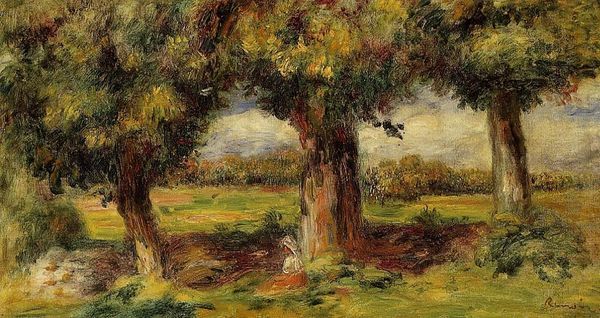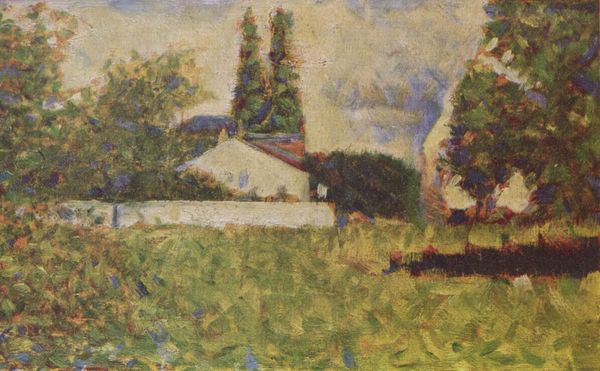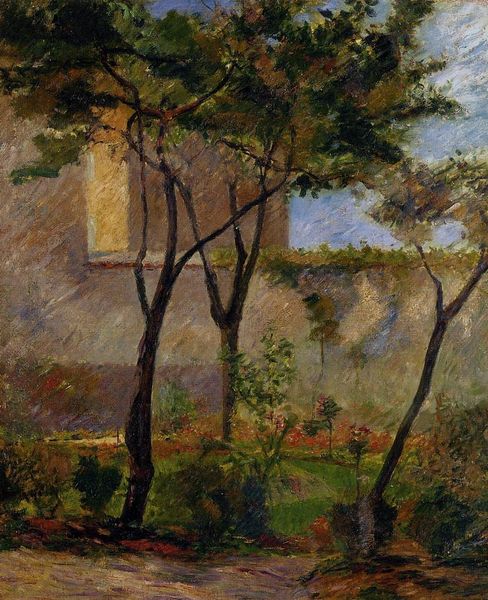
painting, oil-paint
#
tree
#
animal
#
painting
#
impressionism
#
oil-paint
#
landscape
#
impressionist landscape
#
figuration
#
oil painting
#
post-impressionism
Copyright: Public domain
Editor: Here we have Paul Gauguin’s "Two cows in the meadow", painted in 1884. I find it a somewhat chaotic scene; everything seems to blend into each other, yet it is appealing. What’s your perspective on it? Curator: From a Formalist perspective, I find Gauguin’s composition intriguing. Consider the way he manipulates color. Notice how the verdant greens of the meadow transition to earthy browns and oranges, mirroring the tonality found in the trees, even as their forms appear to almost dissolve into the sky. The cows become a component of the landscape itself through his brushwork. How does that strike you? Editor: It is interesting you say that. The cows seem like details, less distinct than the trees and vegetation. What is the effect? Curator: Gauguin achieves a flattening of the pictorial space, characteristic of post-Impressionism. Traditional perspective is abandoned in favor of surface design. Consider the texture – the visible brushstrokes creating a tapestry-like effect. It calls attention to the medium itself, oil paint, rather than a mimetic representation. Editor: That makes the scene more tactile, like you could reach out and feel the paint. Do you think that focus on texture elevates the everyday subject matter? Curator: Absolutely. By focusing on the inherent qualities of paint and composition, Gauguin transforms a mundane scene into a visually stimulating experience. The value lies in the visual construction itself. Editor: I now appreciate the way the brushstrokes and colours work independently of their subject. Thank you for offering that insight! Curator: It's been a pleasure to analyse with you this fascinating approach to pure painting.
Comments
No comments
Be the first to comment and join the conversation on the ultimate creative platform.
